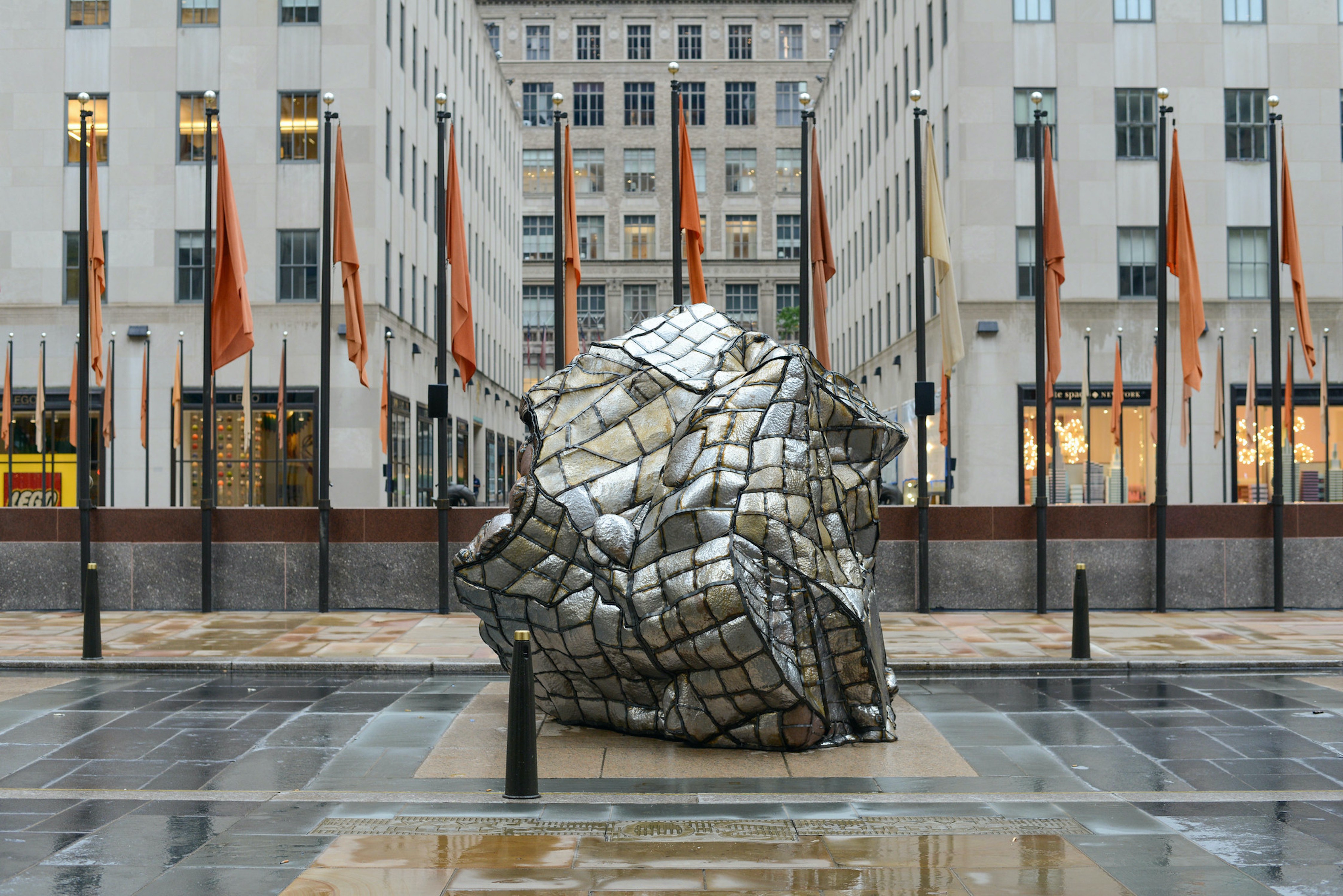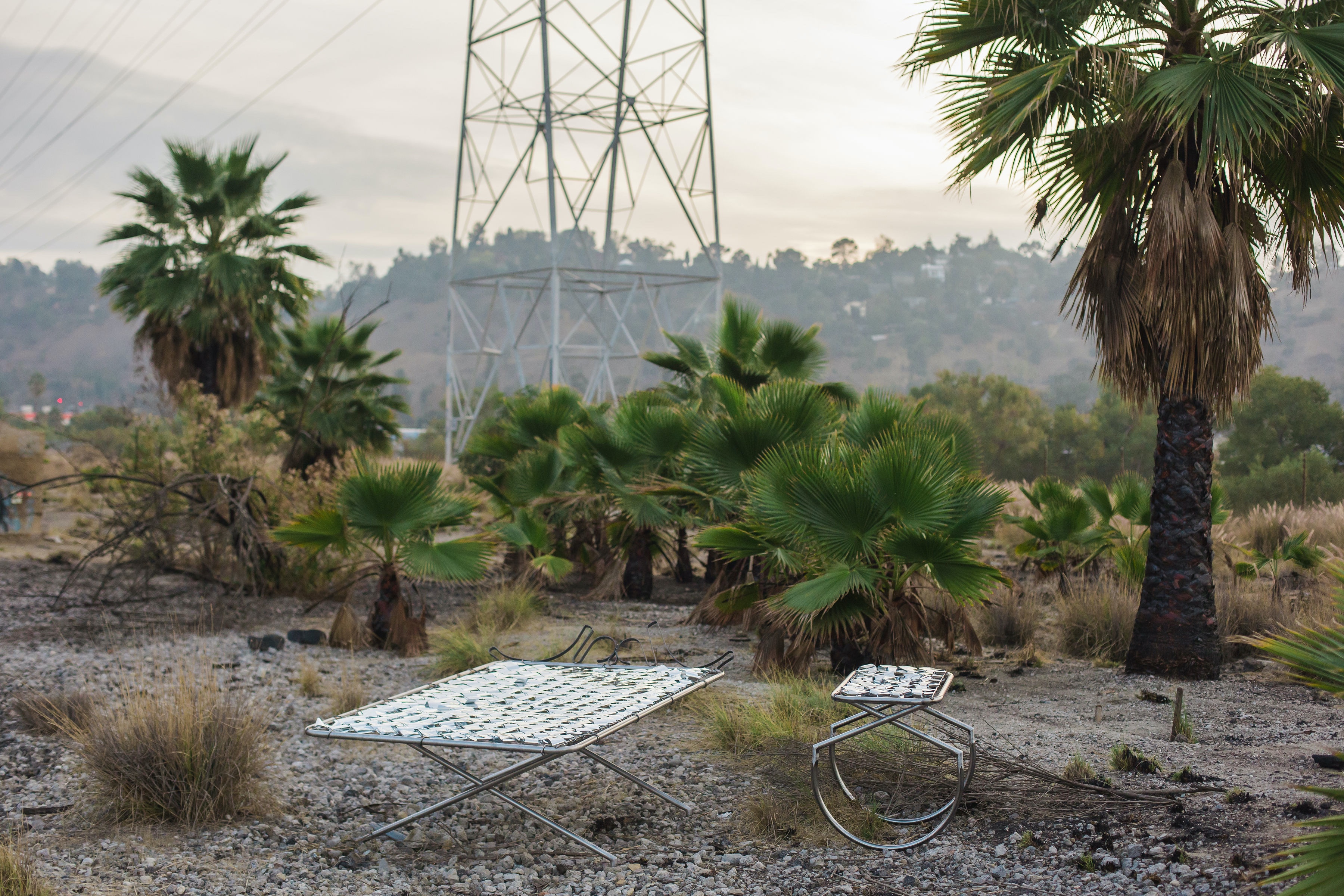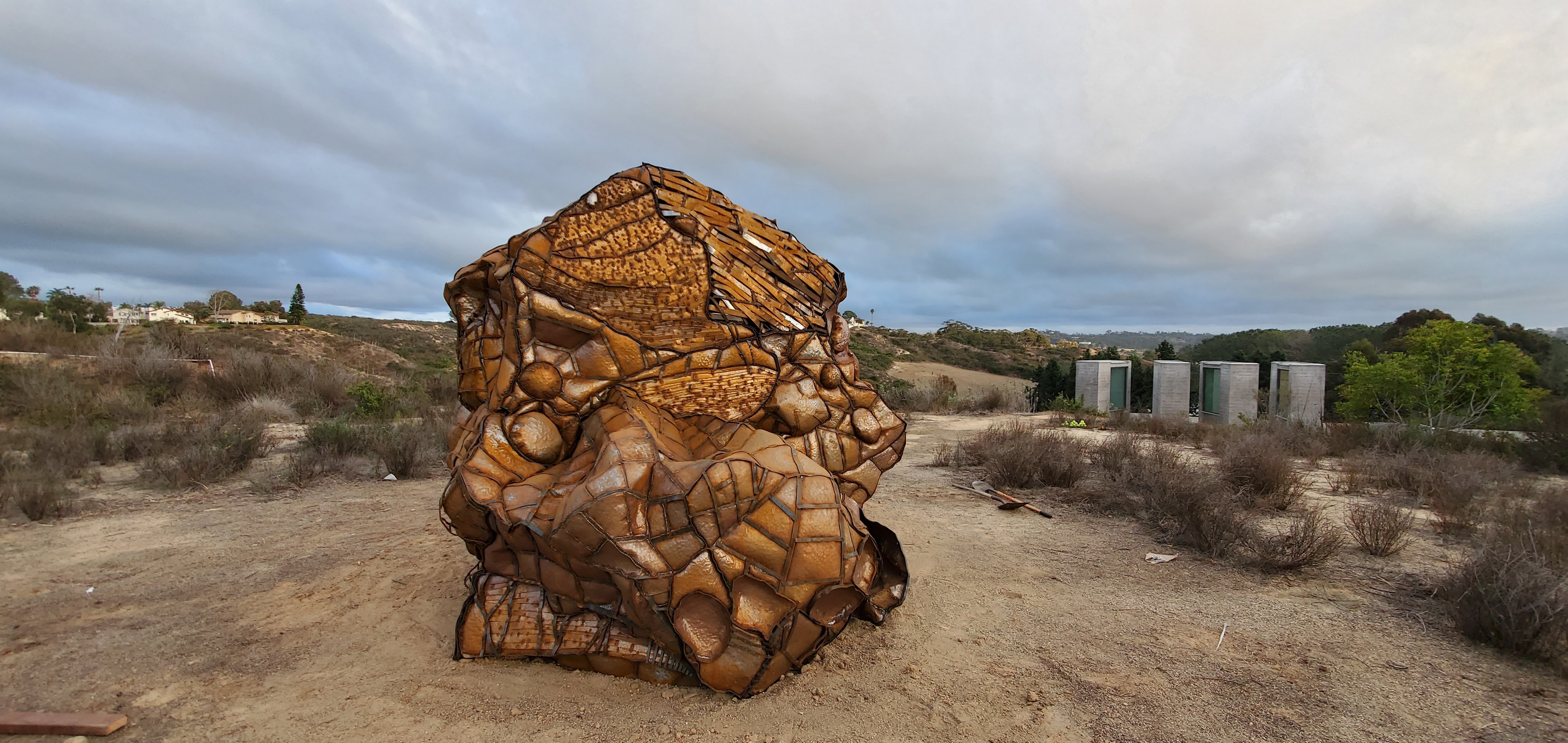Beatriz Cortez is a multidisciplinary artist and scholar based in Los Angeles. After growing up in San Salvador, at the age of eighteen, Cortez fled El Salvador’s Civil War. Her sculptural work engages with migration as an experience of colliding times and spaces. Past, present, and future coincide; memory informs the present and mobilizes to imagine better futures. Cortez’s work is often speculative, invoking otherworldly refuges like the space station. It is also resolutely material, invested in the dialogue between a piece of steel and the natural elements. Her monuments to immigrants—both human and nonhuman—destabilize the monument’s longstanding association with fixity and instead pay tribute to nomadic simultaneity, to what has come before and what could yet be. Her work is currently on view throughout the Americas, from the Museo de Arte de El Salvador and Panama City’s Museo de Arte Contemporáneo, to MSU Broad Art Museum and finally to The Lux Art Institute.

Carolyn Fornoff: Glacial Erratic is a sculptural work that was installed at Rockefeller Center as the inaugural Frieze Arto LIFEWTR sculpture. Can you tell us a bit about that work, and how it dialogues with the installation site, as well as with topics like migration and climate change?
Beatriz Cortez: Yes, I imagined Glacial Erratic while I was spending a few weeks in New York while conducting research at the archives at MoMA. I had the memory of these rocks because my parents got married in New York and my brothers were born in New York and during my childhood I had seen many images of them interacting with these rocks before I was born. So I went to Central Park and later to Prospect Park and other parts of Manhattan looking for glacial erratics and imagining a time before the city was built in this place. I thought it was important and powerful to think of long temporalities, like the ancient Maya did, and to see these rocks as migrants brought here by the melting glaciers millions of years ago, and to think of the planet in flow and of migration as planetary and millenary.
Placed in the context of Rockefeller Center, the sculpture began to react to the environment as it was exposed to the elements and to human traffic. As it did, it evoked other past and future temporalities before and after Rockefeller Center or the City of New York, it engaged with the idea that modernities crumble, and that everything is in motion.
CF: Over time, the appearance of Glacial Erratic changes as the sheet metal corrodes and rusts. You often choose not to seal your sculptures. What appeals to you about steel and about corrosion?
BC: Time is one of the fundamental concepts that inform my work. Unsealed steel makes visible the organic quality of the material, and the temporalities that mark matter, and the ways in which nothing is static, everything is in motion and in a process of transformation. It also gives a dimension to my work that is closer to an experience than to an object.
CF: If Glacial Erratic invokes a deep past, other pieces imagine the far future. Spaceships are a common motif, like Generosity I, which was inspired by the first satellite to circle the Earth, Sputnik I. Generosity I carries seeds native to the Americas into the distant future. Can you talk about the importance of plants in your work? Are plants or the landscape also part of your installation decisions?
BC: The seeds that are part of Generosity I and Generosity II, which is now on view at the MSU Broad Museum in Michigan, evoke the technological advances and the knowledge of ancient peoples sent across time for all of us to survive in the present and for others to survive in the future. In this way, this space capsule imagines the concept of generosity as a gift that was sent towards the future, to unknown others by the ancestors. I love this message that it carries as well, it is an invitation for each of us to also send gifts of generosity towards unknown others whom we will never meet and who will recirculate these and other gifts towards yet unknown others. In addition, the seeds, and the plants that will grow from them, will carry that ancient knowledge, and in many ways the cultural, spiritual, cosmic content of their survival on Earth, which includes their collaboration with humans during the Anthropocene. The plants are evidence of collaborative and often communal, intergenerational care and interspecies shared initiatives.

CF: A lot of your monumental sculptures think transnationally. I’m thinking about Cairn, which is made from lava from the volcanic fault that connects San Salvador, where you are from, with Los Angeles, where you live and work. We often think about monuments as only relating to the installation site, but your pieces point in multiple spatial and temporal directions. How can monuments help us think transnationally?
BC: I think the migration crisis makes it impossible for us not to think transnationally or outside the diagram of the nation because so many lives are tied to multiple spaces, families and communities are divided by borders. However, there are non-human reasons to this as well. For instance, lava flows under the volcanic range that unites my two homes, Los Angeles and San Salvador. The underworld is not divided by these borders.
CF: Cairn is also an homage to Indigenous practices of landmarking. You frequently foreground Indigenous cosmologies, practices, and materials in your work. One thing you have mentioned before that has stuck with me is that we often think about Indigenous peoples as part of our past, but less frequently do we imagine them as informing our future. Can you speak a bit more about that?
BC: Yes, precisely the narrative of nationalism pushes Indigenous peoples towards a past and circulates the idea that Indigenous people who are alive, creating, producing, and thinking, are part of the past, sometimes of a backward past and sometimes of a glorious past, but are part of a past that enabled the contemporary national subject that we are supposed to incarnate. This is where ideas such as Indigenous people being our roots come from. These are violent ideas that would require for Indigenous peoples to be buried under the ground for us to exist as such. I want to imagine not only Indigenous survival, I want to engage in a transnational and transtemporal conversation with Indigenous ancient and contemporary ideas, and to imagine the survival of Indigenous peoples in the future.
CF: Social justice is central to your work, especially migrant rights. You have incorporated chain-link and mylar blankets in your recent sculptures in a nod to Central American migrants detained in immigration detention centers; a way to refashion these materials into something utopian. Other pieces of yours, like No Cages No Jaulas, which was sky-typed over the Los Angeles Immigration Court as part of the In Plain Sight art project, denounce the immoral imprisonment of migrants. Can you talk a bit about the tension between utopian and dystopian impulses in your work?
BC: Yes, I think that another world is possible with the same resources that we have. This is why I decided to make the bed, crib, petate, shelter, awnings that I made as part of the Cosmic series, all with the same materials that surround the children in the detention centers. Children need magic, the magic of their childhood is being robbed from these children. I think making these detention centers and what they represent visible is important because invisibility is one of the main reasons these places exist all around us. But I also think we all need to work at producing magic and helping repair the childhood of the children that these years of inhuman migratory policies have damaged.

CF: How did you choose the Los Angeles Immigration Court as the site for your In Plain Sight intervention? As an ephemeral and incorporeal intervention, how does a project like In Plain Sight change how we understand monuments?
BC: In Plain Sight was and continues to be an amazing project that allowed over 80 artists to collaborate together. It was envisioned and created by two Los Angeles based artists: Cassils and rafa esparza. Through our conversations with each of them, they proposed the sites to each of the artists.
Although at different temporalities and speeds, everything is ephemeral. However, this intervention in public space is also long lasting. It was visible in a space of about 20-mile radius from downtown Los Angeles, so potentially millions of people could see it in person and could remember the experience of watching the letters flow with the atmosphere and dissolve with the air currents. In addition, the documentation of the work remains. Also, it allowed some of the artists in our project to speak to immigrants, to speak to their families, to speak to others who had never known that immigrant detention centers for profit were so close to our homes, etc. In at least one instance, one of the messages was written over a detention center during the time when immigrants were able to look up at the sky.
For me this project also had a trans-temporal dimension or paying attention, listening and learning from the ancestors, who were experts at communicating with each other through different means, smoke being one of them. We were sending smoke signals to people who are isolated from the world, even from their own lawyers, we were saying to them, like Gala Porras-Kim wrote in the sky: "T.Q.M. mi cielo..."

Beatriz Cortez, Glacial Erratic, 2020. Steel. (Courtesy of the artist and Commonwealth and Council. Photo: Guusje Sanders / Lux Art Institute)
CF: Your work has been displayed in sites as distinct as Rockefeller Center and the sky above Los Angeles Immigration Court. What future sites are you considering?
BC: This year I had the amazing experience of moving Glacial Erratic from New York to Los Angeles and from Los Angeles to Encinitas, where it is currently on view at the Lux Art Institute as part of a group show that I conceived, titled #[Glyph] and inspired on the idea that the whole landscape, the mountains, the continents, the planet is in flow.
I am currently working on a collaborative installation with an amazing group of thinkers in a Kaqchikel community in Patzicía, Guatemala called Kaqjay, and with two artists from Mexico City whose project is called FIEBRE Ediciones. Together we have been meeting virtually for months and creating a collaborative installation called Objeto Antiguo. It will be on view at the Los Angeles Contemporary Exhibitions in Los Angeles as part of an exhibition titled intergalactix: against isolation, starting in May.
In addition, I am making several large-scale works for a show called Futures at the Smithsonian Arts + Industry Building in Washington D.C.; for a group show at the Tufts University Art Gallery about the Artists Call initiative of the 1980s to stop U.S. intervention in Central America; and for my upcoming solo show at Pitzer College. I am also making a new sculpture about the birth of corn for a show at the Fowler Art Museum during the upcoming Pacific Standard Time series of shows on climate and science.
CF: I think it is important for readers to know that in addition to your artwork and activism, you are a professor and writer at California State University, Northridge. There you cofounded the first Central American and Transborder Studies department in the United States, which is hugely important for the field of Central American studies, as well as for Central American students in Los Angeles. Do you see this institution building as another form of monument-making? Or how does collaboration with your students and the diaspora inform your creative work?
BC: I don't think of myself as a founder of anything. I don't want any part of that nationalistic narrative. Besides, our Program, which later became a Department, was made possible by the initiative of students and faculty and an entire community, and it was pushed by demographics. What I have done is nurtured this small program and helped grow it into a degree granting department, I have expanded the curricula there, I have invested my vital energies into that project for the last 21 years because I believe it is important for our community, it makes an enormous difference to our students, and to us, the faculty working there, it is exciting to collaborate together in this effort.
But I also think that institutions and projects are ephemeral, they have a lifetime, and they are not always going to last forever in the same shape and form. A project like ours is quite fragile, especially if it is imagining cultural dynamics in transnational ways, questioning nationalism, foundational narratives, traditional ways of understanding identity, etc. It has been a lot of work and it has been worth it. I have met my greatest collaborators there, and I have been inspired by our students and our graduates who are now community leaders, lawyers, actors, teachers, social workers, professors, etc. Because of this I also know for certain that everything that we have accomplished together in our Department is like a snowball, it multiplies in unexpected ways, and it reaches people I will never get to know.
